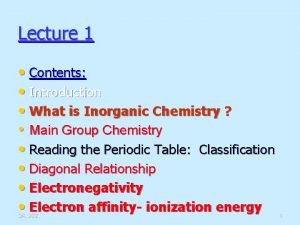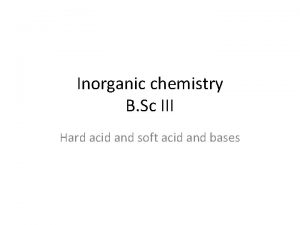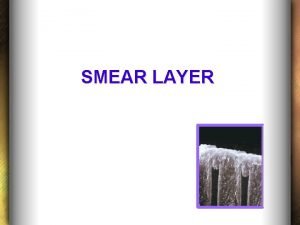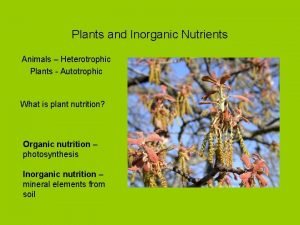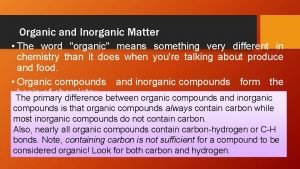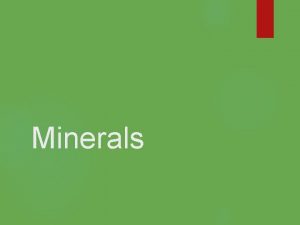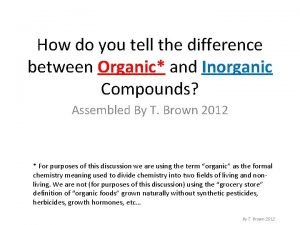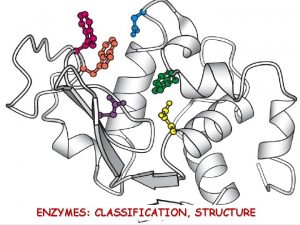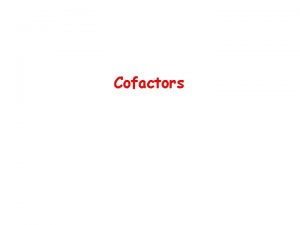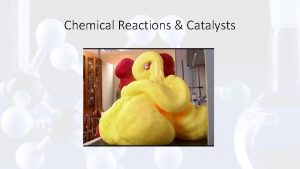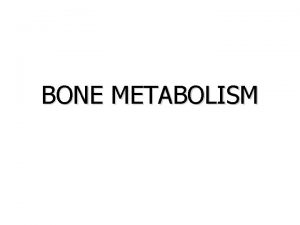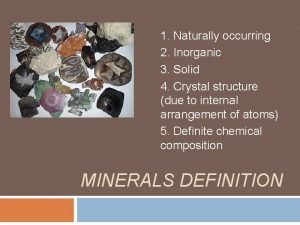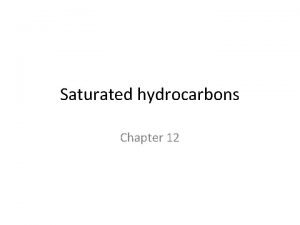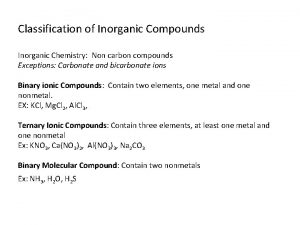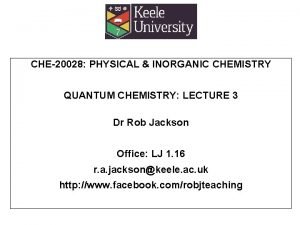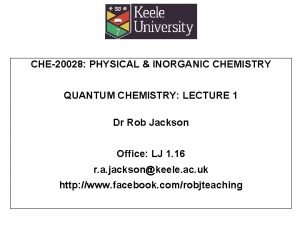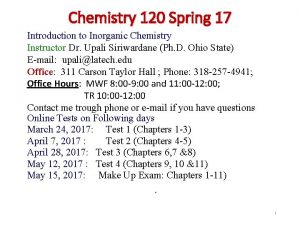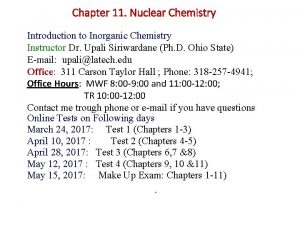Lecture 1 Contents Introduction What is Inorganic Chemistry































- Slides: 31

Lecture 1 • Contents: • Introduction • What is Inorganic Chemistry ? • Main Group Chemistry • Reading the Periodic Table: Classification • Diagonal Relationship • Electronegativity • Electron affinity- ionization energy 3/4/2021 1

Introduction What is Inorganic Chemistry ? • “The chemistry of everything that is NOT organic…” • “The chemistry of all of the elements and their compounds except for the hydrocarbons and their derivatives. ” • “The branch of chemistry falling between and overlapping with physical chemistry and organic chemistry. ” 3/4/2021 2

Why Should You Study Inorganic Chemistry ? • Essentially the entire universe is Inorganic. Elemental Composition of the Sun and the Universe Sun Universe Hydrogen Helium All Others 92. 5 % 7. 3 % 0. 2 % 90. 87 % 9. 08 % 0. 05 % • The Earth is predominantly Inorganic Elemental Composition of the Earth’s Crust Oxygen Silicon Aluminum 3/4/2021 45. 5 % 27. 2 % 8. 30 % Iron Calcium All Others 6. 20 % 4. 66 % 8. 14 % 3

¨ Main Group Elements: s and p block elements ¨ Transition Elements: d elements ¨ Lanthanides and Actinides: f block elements p s d In which d orbit is being filled In which p orbit is being filled In which s orbit is being filled f In which f orbit is being filled 3/4/2021 4

Main Group Chemistry 3/4/2021 5

Lanthanides Actinides 3/4/2021 6

Reading the Periodic Table: Classification • Nonmetals, Metalloids, Noble gases 3/4/2021 7

In the periodic table of elements, the number of the orbital electrons, that is the atomic number, and their arrangement determines the chemical and physical properties of an element. Each group of elements has a characteristic electronic arrangement and therefore elements within one group exhibit similar physical and chemical properties 3/4/2021 8

s-block elements 1 -The alkali metals: in which all elements have one s electron in their outer shell, appear in a vertical column named Group 1. ns 1 2 -the alkaline earth metals: which have two s electrons in their outer shell, form Group 2. ns 2 p-block elements Groups 13 ns 2 np 1 Groups 14 ns 2 np 2 Groups 15 ns 2 np 3 Groups 16 ns 2 np 4 Groups 17 ns 2 np 5 Groups 18 or 0 ns 2 np 6 (except He: 1 s 2) The inert gases which appear in a group labeled Group 0 have the most stable arrangement of electrons because their outer shell of electrons is full. This explains their lack of 3/4/2021 9 chemical reactivity.

q Core Designation - A designation of electronic configuration wherein the outer shell electrons are shown along with the “core” configuration of the closest previous noble gas. Li Be [He] 2 s 2 Na [Ne] 3 s 1 Mg [Ne] 3 s 2 [Ar] 4 s 1 Ca [Ar] 4 s 2 Rb [Kr] 5 s 1 Sr [Kr] 5 s 2 K 3/4/2021 [He] 2 s 1 10

Electronic Configuration and the Periodic Table q s-Block Elements q p-Block Elements q d-Block Elements q f-Block Elements Electronic Configuration for positive ions (cations) Cations are formed by removing electrons in order of decreasing n value. Electrons with the same n value are removed in order of decreasing l value. 3/4/2021 11

q Atomic Size Atomic radii are considered to be 1/2 of the average distance between centers of identical atoms that are touching each other. This will vary with the chemical environment the atom is in. 1. 42 Å 1. 54 Å Fluorine Diamond C – 0. 77 Å 3/4/2021 F – 0. 71 Å 12

3/4/2021 13

Trends in Atomic Radii: 1. Atomic radii increase from top to bottom in a family or group. The number of electrons and the nuclear charge are increasing! - Tends to shrink atom. But extra electron are added to new shells that are further from the nucleus and more effectively shielded from the nucleus - Tends to make the atom larger. 3/4/2021 14

2. Atomic radii decrease from left to right across a row or period. The number of electrons and the nuclear charge are increasing! - Tends to shrink atom. The electrons are being added to the same shell and are not well shielded and thus, the atoms get smaller. 3. Summary of trends Down a Group - Larger Across a Period - Smaller 3/4/2021 15

What Affects Atomic/Ionic Sizes? ÕThe Charge on the Nucleus ÕShielding - This reduces the actual nuclear charge resulting in an “effective” nuclear charge. In general, Zeff (effective nuclear charge) increases across a period but remains about the same or slightly decrease down a group. 3/4/2021 16

q Ionic Size Based on the internuclear distance of cations and anions in ionic crystals. Cations - Monatomic cations are smaller than their parent atoms. The whole outer shell is typically removed. The effective nuclear charge is increased. Na atom 1. 86 Å 3/4/2021 Na+ ion 1. 02 Å 17

Anions - Monatomic anions are larger than their parent atoms. The extra electrons are typically added to the same shell where they are repelled by the other electrons already present, making the ion bigger than its parent atom. F Atom 0. 71 Å 3/4/2021 Fluoride Ion 1. 36 Å 18

q Ionization Energy - The energy required to remove an electron from a gaseous ground-state atom or ion. A. First Ionization Energy - The energy required to remove the most loosely bound electron from the valence shell. B. Second Ionization Energy - The energy required to remove the second electron after the first one is gone. C. Third Ionization Energy - Etc. , Etc. 3/4/2021 19

3/4/2021 Li (g) Li+ + e- IE 1 = +520 k. J/mol Li+ Li 2+ + e- IE 2 = +7298 k. J/mol Na (g) Na+ + e- IE 1 = +496 k. J/mol Na+ Na 2+ + e- IE 2 = +4564 k. J/mol Mg (g) Mg+ + e- IE 1 = +737 k. J/mol Mg+ Mg 2+ + e- IE 2 = +1447 k. J/mol Mg 2+ Mg 3+ + e- IE 3 = +7738 k. J/mol 20

Trends in Electron Affinities Increases up a group. Increases from left to right in a period. H 3/4/2021 Li Be B C N O F Na Mg Al Si P S Cl K Ca Ga Ge As Se Br Rb Sr In Sn Sb Te I Cs Ba Tl Pb Bi Po At 21

Summary of Trend • Periodic Table and Periodic Trends • 1. Electron Configuration 3/4/2021 3. Ionization Energy: Largest toward NE of PT 4. Electron Affinity: Most favorable NE of PT 2. Atomic Radius: Largest toward SW corner of PT 22

Metals Blue (underlined) Non-metals green (italics) Metalloids red (Bold) 1 2 3 4 5 6 7 Li Be B C N O F Na Mg Al Si P S Cl K Ca Ga Ge As Se Br Rb Sr In Sn Sb Te I Cs Ba Tl Pb Bi Po At 23

p-block and the frontier zone • So this gives rise to frontier between metals and non- • metals and it is in this zone are the metalloids that we have encountered earlier. The metalloid have some of the characteristics of metals and non-metals and this frontier is denoted by this zigzag line 3 4 5 6 7 B C N O F non Al Si P S Cl metals Ga Ge As Se Br In Sn Sb Te I Tl Pb Bi Po As Metalloids 24

Electrongetaivities for selected elements (Pauling Scale) H 2. 1 Li 1. 0 Na 0. 9 K 0. 8 Be 1. 5 Mg 1. 2 Ca 1. 0 B 2. 0 Al 1. 5 C 2. 5 Si 1. 8 N 3. 0 P 2. 1 Ga Ge As O 3. 5 S 2. 5 Se 2. 5 F 4. 0 Cl 3. 0 Br 2. 8 25

Diagonal Relationships The elements in each encircled pair have several similar properties. 26

Diagonal Relationship • Li Na Be Mg B Al C Si • Elements that are linked by the arrows in the diagram above are said to be diagonally linked. These pairs of elements often show similar chemical properties e. g. Li and Mg both form nitrides. 27

Group IA: The Alkali Metals The metals in Group IA (Li, Na, K, Rb, Cs, and Fr) are called the alkali metals because they all form hydroxides (such as Na. OH) that were once known as alkalies. The electron configurations of the alkali metals are characterized by a single valence electron. As a result, the chemistry of these elements is dominated by their tendency to lose an electron to form positively charged ions (Li+, Na+, K+). Li: [He] 2 s 1 Rb: [Kr] 5 s 1 Na: [Ne] 3 s 1 Cs: [Xe] 6 s 1 K: [Ar] 4 s 1 Fr: [Rn] 7 s 1 The alkali metals lose electrons so easily that sodium dissolves in liquid ammonia at temperatures below the boiling point of ammonia (-33 o. C) to give Na+ ions and electrons. Na(s) 3/4/2021 NH 3(l) Na+ + e 28

Group IIA: The Alkaline-Earth Metals The elements in Group IIA (Be, Mg, Ca, Sr, Ba and Ra) are all metals, and all but Be and Mg are active metals. The term alkaline reflects the fact that many compounds of these metals are basic or alkaline. The term earth was historically used to describe the fact that many of these compounds are insoluble in water. Three points should be kept in mind, however. 1 -The alkaline-earth metals tend to lose two electrons to form M 2+ ions (Be 2+, Mg 2+, Ca 2+, and so on). 2 -These metals are less reactive than the neighboring alkali metal. Magnesium is less active than sodium; calcium is less active than potassium; and so on. 3 -These metals become more active as we go down the column. Magnesium is more active than beryllium; calcium is more active than magnesium; and so on. 3/4/2021 29

Inert pair effect Al and Tl are both metals in group 3 of the periodic table, but Al ions are only ever found in the +3 state. (Al 3+ cations), but Tl is known to form compounds in which there can be Tl+ or Tl 3+ cations. This tendency for elements at the bottom of groups 3, 4 and 5 to form compounds in which their outermost s electrons are not involved in bonding is called the inert pair effect. The basic reason is that the s electrons see much more of the nucleus than the p electrons so they are more stable (the s electrons are more penetrating) 30

Properties and Trends in Group 3 A • Boron tends to form covalent compounds rather than ionic compounds. • The rest of group 3 A elements can form 3+ ions. • Gallium, indium, and thallium also often form 1+ ions by retaining their ns 2 electrons; this is called the inert pair effect. 31
 Advanced inorganic chemistry lecture notes
Advanced inorganic chemistry lecture notes Organic vs inorganic chemistry
Organic vs inorganic chemistry Importance of inorganic chemistry
Importance of inorganic chemistry Inert pair effect
Inert pair effect Organic vs inorganic molecules
Organic vs inorganic molecules Fazan rule
Fazan rule 01:640:244 lecture notes - lecture 15: plat, idah, farad
01:640:244 lecture notes - lecture 15: plat, idah, farad Contents introduction
Contents introduction An introduction to atmospheric physics
An introduction to atmospheric physics Ib chemistry functional groups
Ib chemistry functional groups Introduction to biochemistry lecture notes
Introduction to biochemistry lecture notes Introduction to psychology lecture
Introduction to psychology lecture Introduction to algorithms lecture notes
Introduction to algorithms lecture notes Smear layer in endodontics
Smear layer in endodontics Charring test of organic and inorganic compounds
Charring test of organic and inorganic compounds Heterotrophic plants
Heterotrophic plants Organic vs inorganic
Organic vs inorganic Organic chemistry chapter 1
Organic chemistry chapter 1 Organic molecules vs inorganic molecules
Organic molecules vs inorganic molecules Meaning of the word organic
Meaning of the word organic Veins are often formed from hot water solutions
Veins are often formed from hot water solutions Organic and inorganic cofactors
Organic and inorganic cofactors What is the difference between organic and inorganic
What is the difference between organic and inorganic Inorganic catalyst vs enzyme
Inorganic catalyst vs enzyme Natural emulsifying agent example
Natural emulsifying agent example Organic and inorganic cofactors
Organic and inorganic cofactors Inorganic catalyst vs enzyme
Inorganic catalyst vs enzyme Inorganic matrix of bone
Inorganic matrix of bone Inorganic nomenclature worksheet
Inorganic nomenclature worksheet Inorganic gaseous pollutants of air
Inorganic gaseous pollutants of air Inorganic mineral definition
Inorganic mineral definition Which compound is inorganic
Which compound is inorganic



